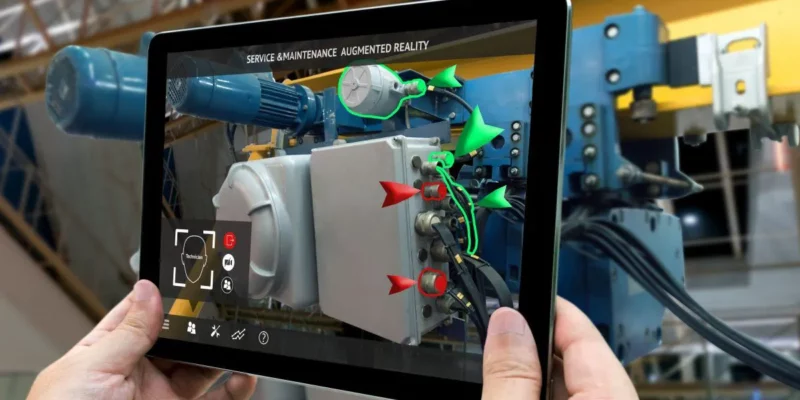
Augmented reality (AR) is a technology that superimposes a computer-generated image on a user’s view of the real world, thus providing a composite view. This technology has many potential applications, including gaming, education, and training.
How AR works
AR works by using a device such as a smartphone or tablet to display a computer-generated image on a user’s view of the real world. The device uses a camera to capture the user’s surroundings, and then uses software to overlay the image on top of the real-world view.
There are two main types of AR: marker-based and markerless. Marker-based AR requires the user to point the device at a special marker, such as a QR code or an image, in order for the image to be overlaid. Markerless AR, on the other hand, does not require any markers. Instead, the device uses computer vision to track the user’s surroundings and overlay the image on top of the real-world view.
Applications of AR
AR has many potential applications, including:
- Gaming: AR can be used to create more immersive and interactive gaming experiences. For example, AR games can allow players to see virtual objects in the real world, or to interact with virtual characters and objects.
- Education: AR can be used to provide students with a more interactive and engaging learning experience. For example, AR can be used to create virtual field trips, or to provide students with 3D models of objects that they are learning about.
- Training: AR can be used to provide more realistic and immersive training experiences. For example, AR can be used to train surgeons on how to perform surgery, or to train pilots on how to fly airplanes.
Benefits of AR
AR offers a number of benefits over traditional methods of interaction, including:
- Immersiveness: AR can provide a more immersive and engaging experience than traditional methods. This is because AR allows users to interact with virtual objects in the real world.
- Accuracy: AR can provide more accurate information than traditional methods. This is because AR allows users to see virtual objects in the real world, which can help them to better understand the information that is being presented.
- Flexibility: AR can be used in a variety of different settings, which makes it a more flexible and versatile technology than traditional methods.
Challenges of AR
AR also faces a number of challenges, including:
- Cost: AR devices can be expensive, which can limit their adoption.
- Complexity: AR can be complex to develop and implement, which can also limit its adoption.
- Battery life: AR devices can have short battery lives, which can limit their use.
- Security: AR devices can be vulnerable to security threats, which can be a concern for businesses and organizations.
Future of AR
AR is a rapidly evolving technology with the potential to revolutionize the way we interact with the world around us. As AR devices become more affordable and easier to use, we can expect to see AR being used in a wider range of applications, from gaming and education to training and manufacturing.
In the future, AR could become so commonplace that it is difficult to imagine a world without it. AR could be used to provide us with information about our surroundings, to help us learn new things, and to make our lives easier and more efficient.

